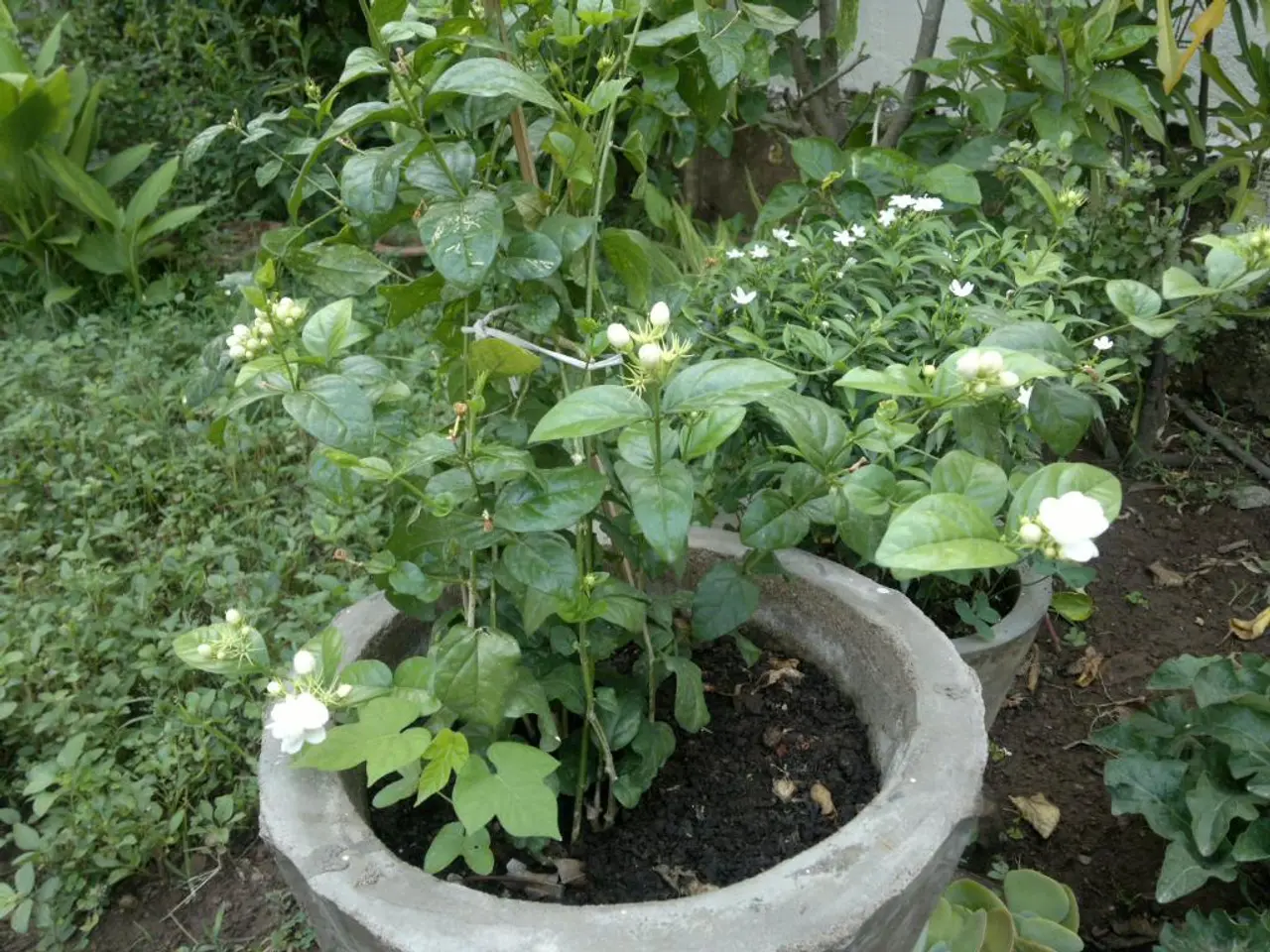Cultivating Indoor Yucca: Guide to Nurturing Yucca as a Household Plant
The Yucca elephantipes, a popular choice for indoor plants, thrives best with the right care and conditions. Here's a guide to help you keep your indoor Yucca plant healthy and thriving.
Light
Yucca plants require bright, indirect light. They can tolerate some direct sunlight for a few hours daily but thrive best with bright, indirect exposure indoors[1].
Water
Water your Yucca plant approximately every 3 weeks to once a month, allowing the soil to dry out completely between waterings. Overwatering can cause root or trunk rot[2][3][5].
Soil
Use a well-draining soil mix, preferably a cactus or succulent soil mix amended for good drainage to avoid waterlogging, which can lead to rot[3]. Professional growers use a 3:1 peat and sand mixture for indoor Yucca plants, while a mixture of half sand and half potting soil is also suitable[4].
Container Selection
Choose a pot with good drainage holes to avoid standing water. Larger pots will support larger plants but must still allow excess water to escape[4].
Fertilizing
Fertilize your Yucca plant during the growing season (spring and summer) every 4-6 weeks with a balanced, diluted houseplant fertilizer. Avoid fertilizing in winter when the plant growth slows[6]. Alternatively, you can use a time-release fertilizer with a ratio of 19-6-12 every 3 months[7].
Propagation
Yucca elephantipes is commonly propagated by stem cuttings or by dividing offsets. Stem cuttings should be allowed to dry and callus before planting in well-draining soil[8].
General Tips
Dust leaves occasionally to keep them free of dust and promote healthy photosynthesis[2]. Avoid setting the container on a saucer where water can collect.
Additional Information
- The size of the container for an indoor Yucca plant affects its growth; larger containers allow the plant to grow larger.
- The pH of the soil for an indoor Yucca plant should be between 5.5-6.5 for efficient uptake of water and nutrients.
- Excess moisture in the soil can damage the roots of an indoor Yucca plant, so containers should have enough drainage holes.
- Some species of yucca have very sharp pointed leaves and may not be suitable for the home.
- Time to plant indoor Yucca plant: Spring
- Scientific name of indoor Yucca plant: Yucca elephantipes
- Hardiness zones for indoor Yucca plant: USDA zones 9
- Maximum height of a mature indoor Yucca plant: 30 feet (9 m)
- Maximum spread of a mature indoor Yucca plant: 25 feet (7.5 m)
- Indoor Yucca plants prefer at least 8 hours of sunlight, but are tolerant of cool temperatures and will thrive where it is warm.
- Some of the favourite varieties of yucca for indoor growing include Yucca elephantipes, Yucca filamentosa, Yucca flaccida, Yucca glauca, Yucca baccata, Yucca constricta, and Yucca rupicola.
- Indoor Yucca plants can be propagated from cuttings in spring or summer.
Maintaining a suitable lifestyle for your Yucca elephantipes at home requires considering its needs in terms of home-and-garden care, such as providing it with a well-draining soil mix for proper growth and placing it in a pot with good drainage holes. Regular gardening tasks like watering your Yucca plant every 3 weeks to once a month and fertilizing it during spring and summer with a balanced, diluted houseplant fertilizer will also contribute to keeping your indoor Yucca plant healthy and thriving.




